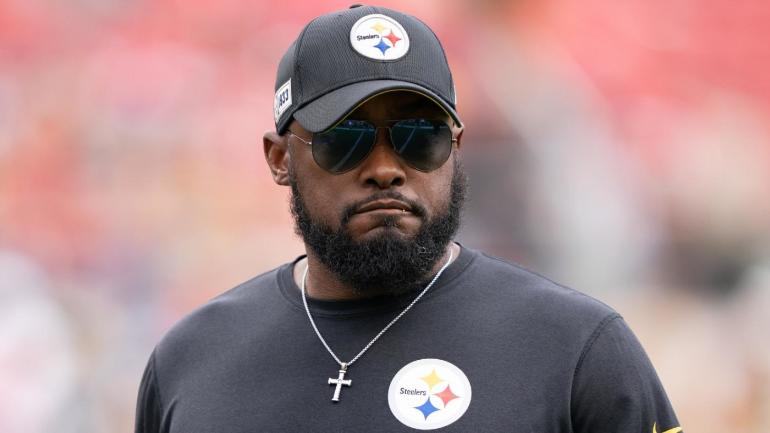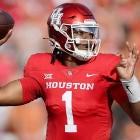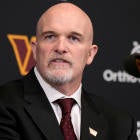
In a shortened offseason, continuity is more meaningful in an NFL season than ever before. It has been an unconventional year, and new head coaches unable to get in front of their players until late July are at a disadvantage. So we put together a system to identify the teams that are likely to be least affected by the change in routine due to their stability in key parts of the franchise.
CBS Sports quantified valuable relationships on both sides of the ball in addition to rewarding coaches for longevity in our continuity rankings. Starting lineups from last season were compared to projections for the 2020 campaign. Teams receive points for returning players and even more points for longevity up to the three-plus years category. The grading scale allows for a maximum score of 100 points. It is broken down into four categories: coaching (maximum 15 points), offense (maximum 45 points), defense (maximum 30 points) and special teams (maximum 10 points). The offensive and defensive categories are broken down into subcategories.
On offense, the focus is on quarterback in the scheme (maximum 15 points), quarterback-wide receiver relationship (maximum 10 points), offensive line (maximum 10 points), quarterback-tight end relationship (maximum 6.5 points) and running back in scheme (maximum 6 points). The latter two categories generally account for a maximum of five points but teams using two tight ends or two running backs on more than 30 percent of their snaps have that tendency baked into their maximum score. Those points are then subtracted from the quarterback-wide receiver designation.
The defense is broken down into the front seven (maximum of 20 points) and secondary (maximum 10 points). The longevity of the defensive coaching staff is taken into account to reach a full score.
These are not power rankings, nor are they a projection of how the season will play out. It is context to validate support in a team or to express concern in a team receiving undue hype. The projections have been updated through Wednesday's report that the Patriots intend to release veteran wide receiver Mohamed Sanu.
Teams with elite continuity
1. Steelers, 90
2. Saints, 89
3. Eagles, 88
4. 49ers, 85
The trait that each of these teams possess is that their coaching staffs have been in place for three-plus years. Those staffs have been able to fine tune their process and protocols, which makes it easier to move pieces around and retain their vision. These teams have not had to face many changes to their starting lineup.
For example: the Steelers are introducing one new starter on offense and one new starter on defense. Most of their returning players have been on the roster for at least three years. Pittsburgh has received a lot of attention as a team that could bounce back with a healthy Ben Roethlisberger. Continuity supports that argument.
Tom Brady has analysts and fans buying into his Tampa Bay team, but the Saints are one of the most consistent teams in the league. It would be unwise to overlook the Drew Brees-Sean Payton connection. The Super Bowl hangover is a phrase thrown around to temper expectations for the Chiefs and 49ers. The solid foundation on which San Francisco has built their roster is one reason to suggest they may be able to repeat if they can stay healthy.
Teams with average continuity
5. Seahawks, 72
6. Packers, 71
7t. Bills, 68
7t. Chiefs, 68
9t. Rams, 67
9t. Texans, 67
9t. Chargers, 67
12. Colts, 66.5
13. Raiders, 66
14. Vikings, 65
15. Titans, 64.5
16t. Ravens, 64
16t. Patriots, 64
Eyes will immediately be drawn to the Chiefs and Ravens landing in this section. Running back Damien Williams and offensive guard Laurent Duvernay-Tardif opted out from Kansas City's defending Super Bowl team. Defensive coordinator Steve Spagnuolo's one season and a suspension for cornerback Bashaud Breeland are why the team is lower than one might expect.
Baltimore is returning all but one starter on offense as well as all but two starters on defense. Why are they so low? Offensive coordinator Greg Roman has been in place for one season while defensive coordinator Wink Martindale has been in place for two seasons rather than the maximum three-plus. It lowers their proverbial ceiling. The defense has six starters with one season or fewer with the AFC North franchise.
Generally speaking, all of these teams are expected to be in contention for their respective divisions. The order could be argued but it is interesting that the rankings are fairly reminiscent of win/loss projections for the 2020 season.
Teams that lack continuity
18. Jaguars, 61
19. Buccaneers, 58
20. Falcons, 53
21t. Cowboys, 48
21t. Cardinals, 48
23. Lions, 47
24. Bears, 44
25. Bengals, 42
26. Washington, 40
27. Browns, 38.5
28. Jets, 38
29. Broncos, 34
30t. Giants, 30
30t. Panthers, 30
32. Dolphins, 24
Fans will find every team with a new head coach in this category. Most offseasons would allow for a new coaching staff to have an extra week preparing their players; that baked-in advantage was not an option this year. The only team with a head coach hired in 2019 to escape this category was the Packers. Head coach Matt LaFleur retained defensive coordinator Mike Pettine, so the marriage was a bit more unconventional than most new hires.
The Browns and Broncos have been trendy betting choices but the amount of turnover each franchise has encountered this offseason is concerning.
The NFL season opens Sep. 10 with the Texans, the No. 10 team in our continuity rankings, at the Chiefs, the No. 8 team in our continuity rankings. It will be the first opportunity to test the output and its impact on the 2020 NFL season.






















